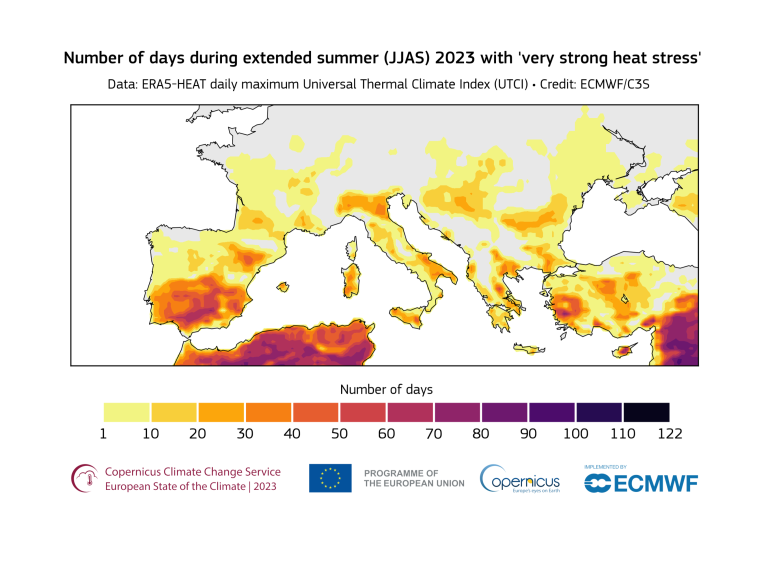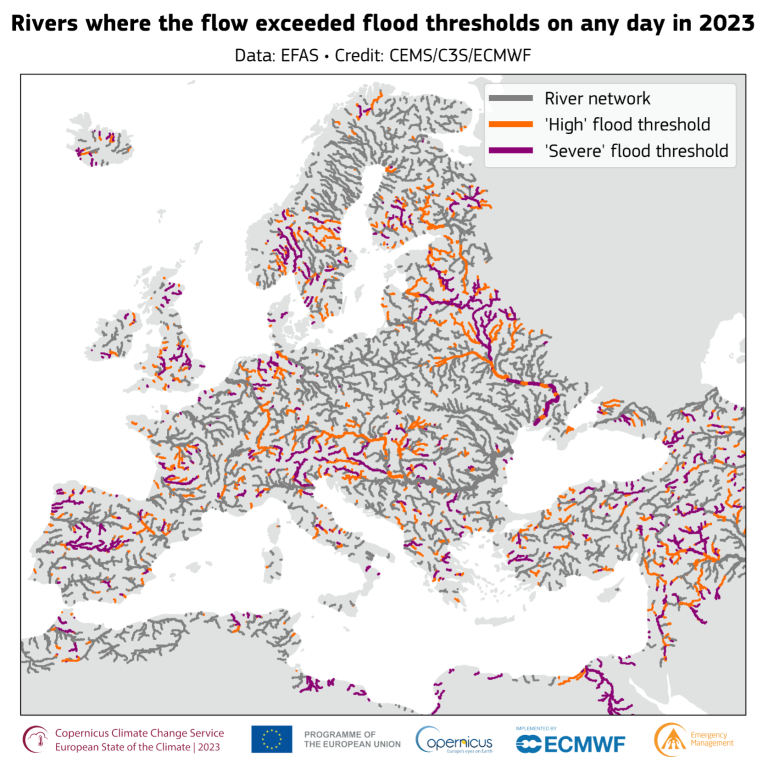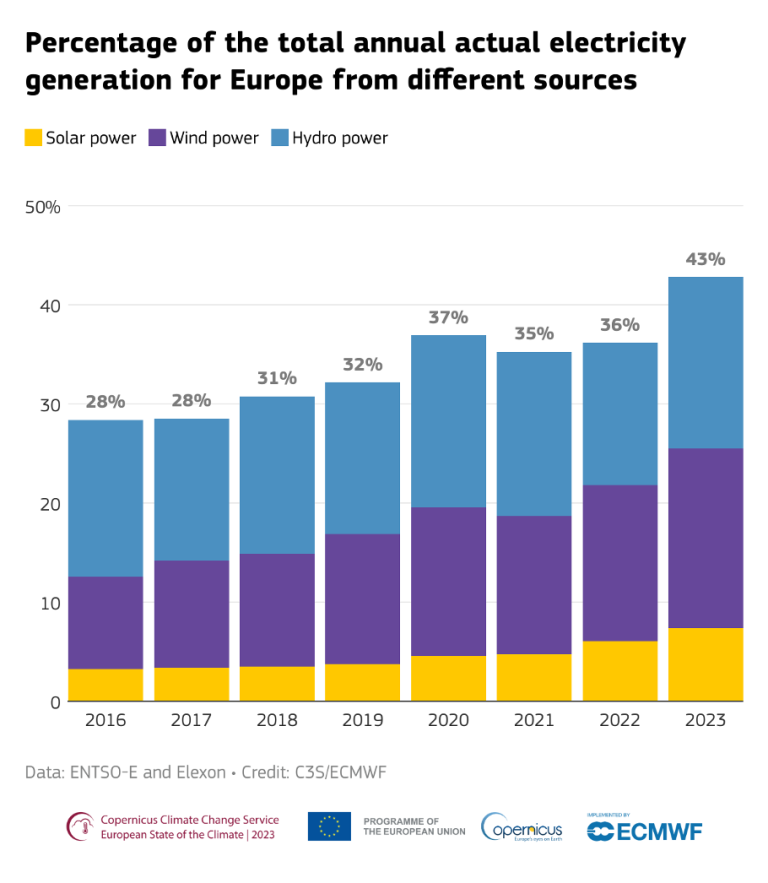
Annual surface air temperature anomalies over European (as defined by the WMO Regional Association VI) land, from a range of datasets, for 1900 to 2023 (start year varies by dataset), relative to the average for the 1991–2020 reference period. Data source: HadCRUT5, NOAAGlobalTemp, GISTEMP, Berkeley Earth, JRA-55, ERA5.
WMO








